#tamales de pipian
Text
Prompt #2: Unique item of my culture by Ana E.



In the first day of November throught Mexico we put a kind of altar called “ofrenda” it’s a form we use to remember and honor the people that we love but are not here with us anymore.
In the “ofrendas” we always put photos of the people we want to remember (not every time it has to be from a relative or a friend, it can be from an artist or person that we admire as in the photo above) another things we also put are:
🌼Flowers of cempasúchil (the yellow ones) and terciopelo (the purple ones)
🌮Food that the person used to like for example mole, pipian, tamales, etc
🕯 Candles
🥛Water and other drinks that the person used to consume
🧂Salt
And finally something that can never be missed: “Pan de Muerto” !
In some ofrendas these elements may be missing or changed but this doesn’t diminish their importance or beauty, this is just another way to see how Mexico is a diverse country and that’s why this item is so important for me and for my culture.
The photos above are from the presentation of ofrendas that my high school made last year :)
1 note
·
View note
Text
Three of the Oldest Hispanic-Owned Businesses in America
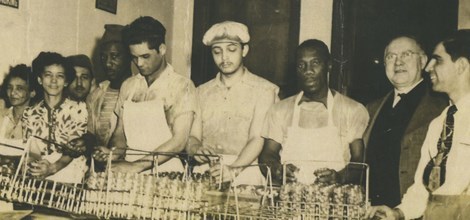
The Hispanic population has been an essential part of our country's story, even before its founding. Many of the first explorers to reach the United States were Spaniards, including Juan Ponce de Leon in 1521, Admiral Pedro Menendez de Aviles in 1565, and Conquistador Don Pedro de Peralta in 1609.
Though Hispanic Americans have had to overcome barriers rooted in discrimination for centuries, they remain almost 25% more likely to be entrepreneurs than the rest of the population. In honor of Hispanic Heritage Month, we are taking a look at three of the oldest Hispanic-owned organizations in American. Continue reading below to discover their stories.
Goya Foods reflects the American dream.
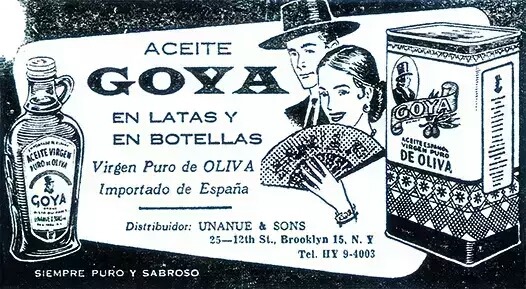
If your family has weekly taco nights, you have probably used some of Goya Foods' authentic packaged beans and rice varieties.
Goya Foods is one of the oldest foods companies in America. Frank Unanue, the President of Goya Foods, Florida, is a third-generation owner who is now witnessing the fourth generation join the family business.
Goya Foods’ story begins in the early 1930s, when Prudencio Unanue Ortiz, the grandfather of Frank Unanue, arrived in New York after emigrating from Spain and Puerto Rico.
Shortly after reaching the United States, Ortiz and his wife purchased the Goya brand for $1. Originally, Goya was primarily known for supplying sardines. The couple set up shop in Lower Manhattan, selling authentic Spanish foods, like olive oil, olives, and of course, sardines.
The Hispanic population continued to grow in the United States, especially after World War II when many Puerto Ricans entered New York. Goya increased their facilities to meet demand and included Caribbean goods, such as plantains, in their product line.
In 1974, Goya established its headquarters in New Jersey, where they currently remain today. Goya continues to offer popular cooking bases, packaged foods, Caribbean drinks, and award-winning olives oils that are beloved across the entire U.S. population.
El Charro claims its spot in history.
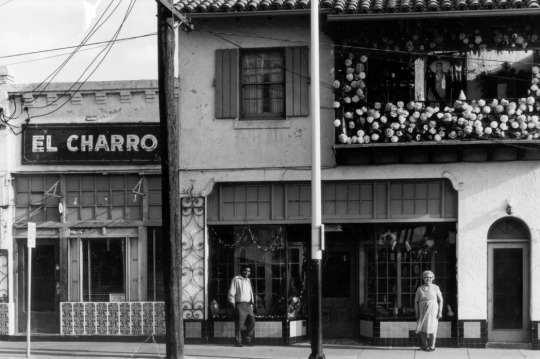
Speaking of Hispanic food products, El Charro, located in Tucson, AZ, is the oldest family-owned Mexican restaurant in the country.
El Charro was started by Monica Flin in 1922. Among other things, Monica is known for inventing the chimichanga. El Charro retells the hilarious story on their website:
“While frying her now famous El Charro ground beef tacos, she accidentally dropped a burro into the frying pan and when the oil splashed up she was about to lash out a common Spanish cuss word starting with “Ch” but because she was amongst her young nieces and nephews, changed it to “Chimichanga”, the equivalent of ‘thingamajig.’ Thankfully for all of us, Monica was a controlled and creative cuss.”
Monica immigrated from France to America in the late 1800s because her father, Jules, was commissioned to build the St. Augustine Cathedral. Jules is also responsible for constructing impressive buildings in downtown Tucson, including their family’s home, which is now where the Original Downtown El Charro Café is located.
Monica impressively wore most of the hats in her woman-owned business, acting as hostess, waitress, and chef! Monica steered her restaurant to become one of the most popular spots in the nation. Bon Appetite, Gourmet Magazine, and the New York Post are just some of the publications that have featured El Charro over the years.
The restaurant is celebrating its 99th anniversary with a special menu that includes their famous tamales, mole pipian, and sizzling rellenos.
San Antonio Hispanic Chamber of Commerce encourages others.
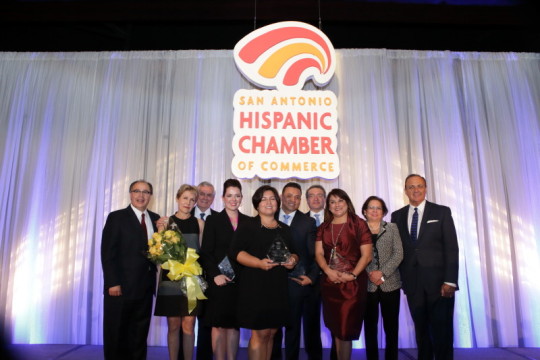
The last business we are focusing on empowers other Hispanic organizations to thrive. Created in 1929, the San Antonio Hispanic Chamber of Commerce was the first resource of its kind.
Don Enrique Santibanez, the Consul General of Mexico in San Antonio, organized what was originally named the Mexican Chamber. At first, the primary goal was to promote trade, policy, and culture between Mexico and America. However, it soon became evident that there was an immediate need to advocate for minority-owned businesses.
The Mexican Chamber of Commerce worked tirelessly over the next decade to creatively assist Hispanic businesses. In 1950, the organization commissioned a bridge on the West Side of San Antonio to make the area more accessible for those shopping downtown. Its creation was an economic boost to the local economy.
In 1988, the Board of Directors of the Mexican Chamber of Commerce drafted the language for the Small Business Economics Development Advocacy Program Ordinance, which the city of San Antonio passed with a 10-1 vote.
Today, the Mexican Chamber of Commerce, which has since been renamed the San Antonio Hispanic Chamber of Commerce, encourages Hispanic small business owners to share their voices and provides resources to help them grow and succeed.
Hispanic-owned businesses have a story to share.
As is the case with any minority-owned business, Hispanic companies have a powerful history. Their stories are full of overcoming societal barriers and blazing trails for the next generation.
The experts at SJR Research help business owners engage with their customers by advertising their journeys. Learn more about our corporate history services and how you can partner with us for your next milestone on our website.
0 notes
Photo

La #comida #tradicional #papanteca de #hoy #tamales de #frijol con #calabaza y #pipian mejor #conocidos cómo #pulacles en la #zona #norte de #veracruz #hechos #conelsazóndemamá (en Mexico City, Mexico) https://www.instagram.com/p/B7wuttLFpEG/?igshid=r0y7snngnbyx
#comida#tradicional#papanteca#hoy#tamales#frijol#calabaza#pipian#conocidos#pulacles#zona#norte#veracruz#hechos#conelsazóndemamá
0 notes
Text
En su edición 2019, el Festival de Día de Muertos en San Juan del Río, incorporó como una pieza fundamental, a la gastronomía, con la finalidad de promover el desarrollo económico y el turismo a través de esta actividad, que ofreció a los asistentes excelentes platillos preparados por manos sanjuanenses.
Dentro de estas actividades se realizó la muestra gastronómica el 2o Concurso Nacional de Tamales y Atole, contando con una gran variedad de sabores diferentes a lo tradicional y con la participación del Chef inglés Graham Campbell como parte del jurado.
También se llevó a cabo la muestra gastronómica “Sabores de Otoño”, a cargo de estudiantes de la Escuela de Gastronomía D’Mont, que encabeza la chef Loli Velázquez, quienes presentaron platillos y repostería, con ingredientes de la temporada, como barritas de calabaza, alfajores, lomo de cerdo en salsa de flor de cempasúchil, crema de amaranto, conejo en salsa de cacahuate, por mencionar algunas delicias ofrecidas a los asistentes al Jardín de la Familia.
Asimismo, el grupo de mujeres que se han capacitado a través de los cursos de cocina ofrecidos por la Síndica Marcia Solórzano, como parte del trabajo para impulsar el desarrrollo económico de las comunidades para que las jefas de familia obtengan un ingreso extra resultado de vender la comida hecha por sus propias manos, encabezaron la muestra de Moles, Adobos y Pipianes.
En este evento se hicieron presentes el Mole Blanco de La Llave; el Manchamanteles de Senegal de las Palomas; Mole Queretano de San Pedro Ahuacatlán; Mole de Huitlacoche de Sabino Chico; Pipián Rojo de San Germán; Pierna en adobo de La Paz; Costilla de cerdo al mezcal de San Javier; Pipián Verde de Loma Linda; Mole de Tamarindo de Santa Cruz Nieto; Mole de Rosas, de El Organal.
#gallery-0-4 { margin: auto; } #gallery-0-4 .gallery-item { float: left; margin-top: 10px; text-align: center; width: 33%; } #gallery-0-4 img { border: 2px solid #cfcfcf; } #gallery-0-4 .gallery-caption { margin-left: 0; } /* see gallery_shortcode() in wp-includes/media.php */
LA GASTRONOMÍA PARTE FUNDAMENTAL DEL FESTIVAL DE MUERTOS 2019 En su edición 2019, el Festival de Día de Muertos en San Juan del Río, incorporó como una pieza fundamental, a la gastronomía, con la finalidad de promover el desarrollo económico y el turismo a través de esta actividad, que ofreció a los asistentes excelentes platillos preparados por manos sanjuanenses.
0 notes
Photo

Patacones con 🧀 queso, tamale de pipian, y jugo de guanábana (at Mora De Castilla Popayan)
0 notes
Photo
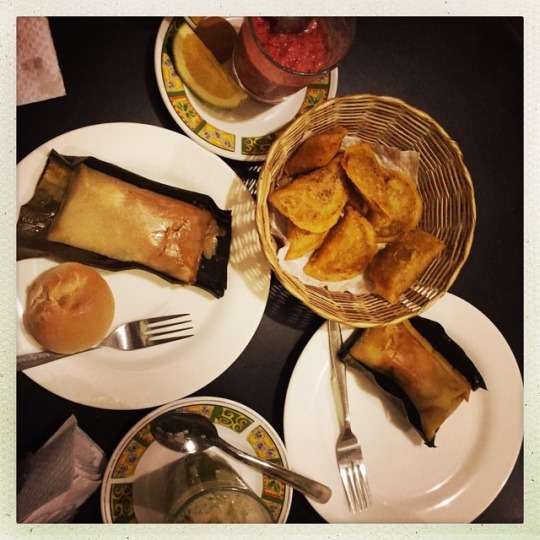
#popayan #gastronomy #empanadas & #tamales de #pipian #salpicon de #mora #lulo #guanabana plus the perfect #lulada #colombiancuisine #cauca #travelling around #colombia (at Puente Del Humilladero)
#mora#colombiancuisine#popayan#empanadas#lulo#cauca#salpicon#colombia#gastronomy#guanabana#lulada#travelling#tamales#pipian
0 notes